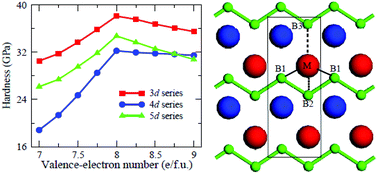The mechanism of anomalous hardening in transition-metal monoborides
Abstract
The quest for novel nanomaterials with unusual functionalities continues to be a central challenge to modern nanoscience. Here we report a surprisingly anomalous hardening behavior exhibited by a class of transition-metal monoborides (TMB). Most remarkable is the occurrence of the intrinsic hardness maximum at the valence-electron concentration (VEC) of about 8 electrons per formula unit (e per f.u.); both lower and higher VECs lead to the decrease of hardness, contrasting with the expected positive correlation between hardness and VEC. Such an unexpected phenomenon originates from the presence of two sorts of bands near the Fermi level that respond oppositely to the movement of dislocations within the metal bilayer. Furthermore, we demonstrate that the hardness is closely related to the formation energy for TMB, which justifies the importance of the thermodynamic stability in designing superhard materials. Our findings not only elucidate the unique mechanism responsible for unusual atom-scale hardening but also open a new avenue towards designing novel multifunctional nanomaterials with the coexistence of high hardness and excellent electrical conductivity.



 Please wait while we load your content...
Please wait while we load your content...